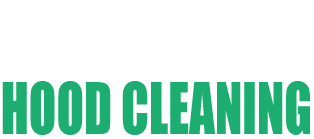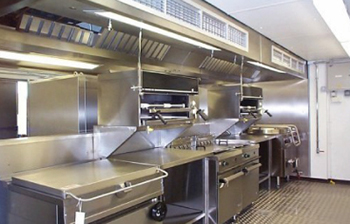The Essential Relationship Between Grease Traps and Hood Cleaning
In the bustling chaos of a busy restaurant kitchen, the serene hum of satisfaction often goes unnoticed. This hummed happiness usually stems from the unsung heroes atop the clamor: the kitchen’s shiniest assets—grease traps and exhaust hoods. Indeed, when it comes to maintaining the health and efficiency of a commercial kitchen, hood cleaning and grease traps are the dynamic duo you can rely on.
The Important Role of Grease Traps in Kitchen Combustion Management
Grease traps, often hidden away under sinks, play a key role in preventing catastrophic disasters and keeping the environment healthy. These devices capture the grease and solid waste from the wastewater, ensuring that fats, oils, and grease (FOG) don’t end up in the sewer systems, causing unforeseen blockages and environmental harm.
But why is the partnership between grease traps and restaurant hood cleaning so essential? It’s because both systems work harmoniously to maintain a safe and efficient cooking space by controlling the two main villains of the kitchen: grease build-up and airborne pollutants.
The Process and Perks of Hood Cleaning
Efficient commercial kitchen hood cleaning is the knight in shining armor every restaurant needs. The process involves a thorough cleaning of the entire exhaust system, including the hoods, fans, ducts, and other accessible areas. This not only cleans the equipment but also extends their lifespan, reduces the fire risk, and improves the air quality within the kitchen.
One might ask, what grease traps and hood cleaning individually accomplish—and how they combine forces to optimize a kitchen’s functionality?
How Grease Traps and Hood Cleaning Work Together
While the grease traps catch and contain unwanted FOG from entering the drainage system, exhaust hood cleaning targets the build-up that occurs within the vents. A scheduled cleaning ensures no greasy residue sticks to or clogs any air passage, ensuring the system’s function is not compromised.
The Benefits of a Synergized Cleaning Schedule
- Fire Prevention: Reducing the accumulation of grease in the hoods and vents lowers the risk of kitchen fires, ensuring the safety of both staff and patrons.
- Enhanced Air Quality: Consistent cleaning of grease traps and hoods means better ventilation and fresher air in the workspace, contributing to a healthier environment.
- Compliance with Health Standards: Regular cleaning ensures compliance with local health regulations and reduces the likelihood of penalties, fines, or closures.
- Cost Efficiency: Periodic maintenance is more cost-effective than emergency repairs or overhauling a neglected system.
- Improved Operational Efficiency: A clean and efficient exhaust system allows for optimal kitchen operations without disruptions caused by equipment failures or unpleasant odors.
San Jose’s Stand on Hood Cleaning
San Jose, renowned for its vibrant culinary scene, understands the importance of maintaining safe and efficient kitchens. Local regulations often require stringent cleansing schedules for San Jose Hood Cleaning to keep restaurants running smoothly while protecting the public and the environment.
In San Jose, compliance is key, and that’s why so many establishments trust reputable services that specialize in both grease trap and hood cleaning. Integrating these two services into a seamless package not only ensures compliance but also reinforces operational efficacy.
Caring for Your Kitchen’s Core Components
The symbiotic relationship between grease traps and hoods is crucial for a thriving foodservice operation. Visionary restaurant owners recognize this by initiating routine training programs and adopting the latest cleaning technologies. This foresight reinforces commercial kitchen hood cleaning as indispensable to achieving not just safety, but also culinary excellence.
Future-Proofing Your Restaurant’s Efficiency
Integrating technology into cleaning routines is not just wise but necessary. The industry is shifting towards automated monitoring systems that notify operators of necessary cleaning schedules and anomalies. This ensures tasks are not just reactive but proactive, enhancing the facility’s lifespan and operability.
Moreover, having a trusted partnership with seasoned professionals guarantees that the standards of cleanliness are met without bearing the brunt of last-minute hectic scheduling or sanitizing chaos.
Conclusively, whether you’re a restaurant nestled in the thriving heart of the Silicon Valley or a budding eatery in the suburbs, ensuring that your commercial kitchen remains in top-notch condition will always rely heavily on tight-knit grease trap and hood cleaning cycles. Make these processes priority maintenance to keep your kitchen humming happily, your diners delighted, and your operations seamless.







